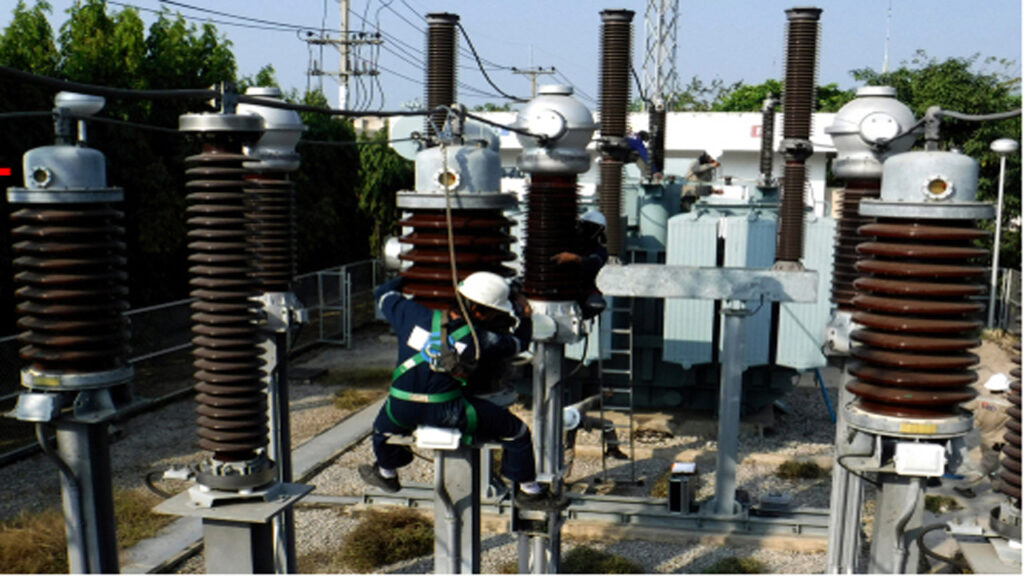What is Transformer Humming?
Transformer humming refers to the low-frequency sound (usually 50 or 60 Hz) emitted by a transformer when it is energized. It’s a noticeable acoustic noise that originates from within the transformer, especially under load.
2. What Causes the Humming Sound in Transformers?
Answer: This humming is mainly caused by magnetostriction.
Magnetostriction: When the transformer core is magnetized by the alternating current (AC), the iron core slightly changes its shape (expands and contracts) due to magnetic forces. This mechanical deformation occurs twice every cycle of AC, creating a continuous vibrating sound—which we hear as humming.
- Magnetostriction is a property of ferromagnetic materials (like the iron core) to change shape or dimensions slightly when subjected to a magnetic field.
- When AC voltage is applied, the magnetic flux in the core changes direction 50 or 60 times per second (depending on the frequency).
- These changes cause the core to expand and contract minutely — this mechanical vibration produces the audible hum.
- Loose parts (like core laminations, windings, or enclosure panels) can amplify this sound if they vibrate in sympathy with the magnetostrictive forces.
3. What is Humming Loss in a Transformer?
“Humming loss” is not a standard or technical term for a specific type of energy loss in a transformer, the humming sound itself is a consequence of energy conversion and the physical processes happening within the transformer, not a distinct “loss” in the same way as core losses (hysteresis and eddy current losses) or copper losses. It can informally refer to:
- Mechanical energy loss due to vibrations in the core and structure.
- It’s very minimal compared to electrical losses (like copper or iron losses) but contributes to noise pollution and minor energy inefficiencies (damping vibration absorbs energy).
- In engineering terms, it might be considered part of core losses or stray losses.
4. Do All Transformers Hum When Energized?
Yes, all transformers produce some level of hum when energized:
- Even unloaded transformers hum due to magnetostriction.
- The intensity depends on design, load, manufacturing quality, and structural mounting.
- Well-designed and properly mounted transformers can minimize audible noise to almost imperceptible levels.
Why transformer rating in kVA?
Transformers are rated in kVA (kilo-Volt-Amperes) instead of kW (kilowatts) because of the nature of the power they handle and the losses associated with their operation.
- Apparent Power (kVA): This is the total power that flows through the transformer, represented by the product of voltage and current (V x A). It includes both real power and reactive power.
- Real Power (kW): This is the actual power consumed by the load and converted into useful work (e.g., mechanical work, heat, light). It’s affected by the power factor of the load.
- Reactive Power (kVAR): This is the power that oscillates between the source and the load, not performing any useful work but necessary for magnetic fields in inductive loads (like motors).
Losses in a Transformer are Independent of Load Power Factor:
- Copper Losses (I2R losses): These losses occur in the transformer windings due to the resistance of the wire. They depend on the square of the current flowing through the windings, regardless of the load’s power factor.
- Core Losses (Iron losses): These losses (hysteresis and eddy current losses) occur in the transformer core. They depend on the applied voltage and the magnetic flux density, which are largely independent of the load current’s phase relative to the voltage (i.e., the power factor)
This losses in a transformer (like copper losses and iron losses) depend on voltage and current, not on the phase angle (or power factor).
kW = kVA × Power Factor → kW depends on the load’s power factor, which the transformer doesn’t control.
A transformer manufacturer doesn’t know the type of load (resistive, inductive, capacitive) that will be connected to the transformer in the field. Therefore, they cannot predict the power factor of the load. Since the transformer’s heating and insulation design are determined by the voltage it must withstand and the current it must carry (which dictate the losses and heat generation), it’s more practical to rate it based on the apparent power (kVA). This rating ensures that the transformer can handle the voltage and current requirements without overheating, regardless of the power factor of the connected load.
So, rating it in kVA makes the specification independent of the load type (resistive, inductive, or capacitive).

